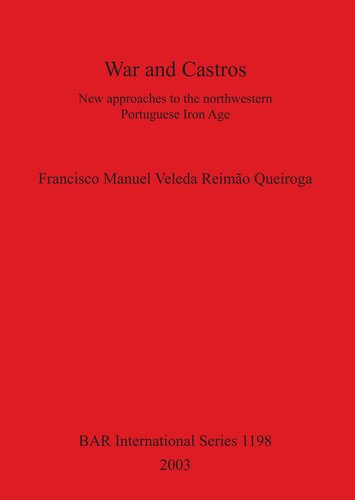

Most ebook files are in PDF format, so you can easily read them using various software such as Foxit Reader or directly on the Google Chrome browser.
Some ebook files are released by publishers in other formats such as .awz, .mobi, .epub, .fb2, etc. You may need to install specific software to read these formats on mobile/PC, such as Calibre.
Please read the tutorial at this link: https://ebookbell.com/faq
We offer FREE conversion to the popular formats you request; however, this may take some time. Therefore, right after payment, please email us, and we will try to provide the service as quickly as possible.
For some exceptional file formats or broken links (if any), please refrain from opening any disputes. Instead, email us first, and we will try to assist within a maximum of 6 hours.
EbookBell Team

4.1
70 reviewsFrom obscure beginnings at the end of the Bronze Age to the award of the Ius Latii to all the inhabitants of Iberia by the Emperor Vespasian (AD 73-74), winds the long and uneven path of the 'Castros Culture' in the Iberian Northwest. A castro is a fortified village and it has given its name to the Iron Age Culture (or group of related cultures) in general, which occupied the region of the Iberian Northwest between the end of the Bronze Age and the beginning of the second century AD. Such sites were characterized by small settlements in their early phases, gradually evolving into urban structures under Roman influence. The period under study in this volume is bounded by the point of emergence of fortified sites during the final stages of the Bronze Age (c.1200-1000 BC) and the Flavian period, at the end of the first century AD. The principal area of study lies within the region confined by the Atlantic coast to the west, the Tâmega-Corgo river line to the east, the Minho river to the north and the Douroriver to the south. The main theme of this book is warfare in the Castros Culture. A fresh approach has been adopted, to evaluate the importance of warfare at this time and to see how it shaped the development of Castros society as a result. For this, warfare is examined in terms of the total environment in which it occurs, i.e. in terms of the geographical, economic, social and ritual landscapes in which it exists. The author's intention is to contribute a fresh and integrated approach to the subject of warfare and its social significance in the Castros Culture of the first millennium BC. A further intention is that his wide-ranging treatment of the subject will open up new directions for future research and detailed analyses.